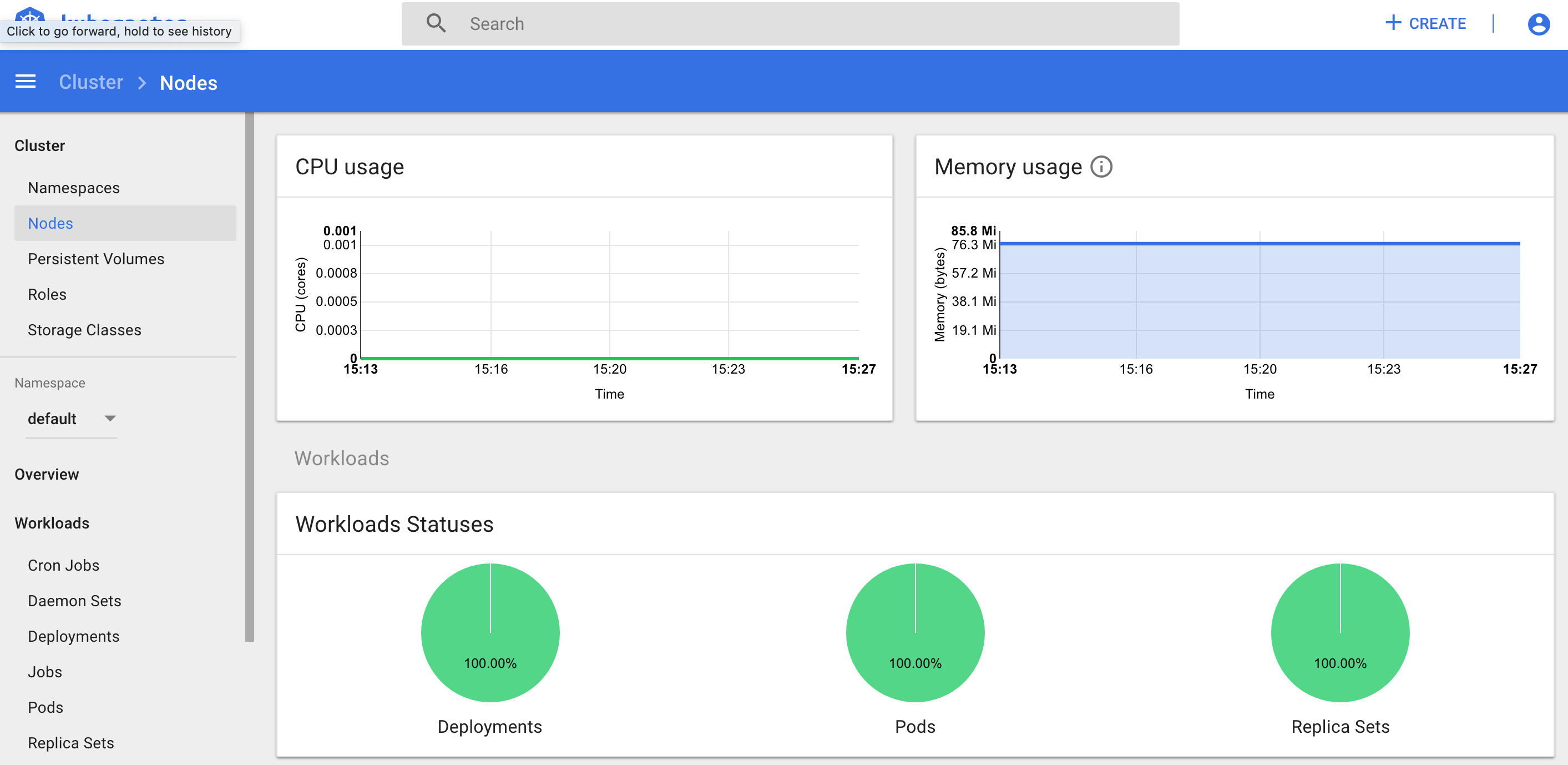Create a kubernetes cluster using the CLI
To create a cluster, you have two options either a Lite cluster or a Standard one.
A Lite cluster is a free cluster comes with a single worker node to deploy container pods upon. A worker node is the compute host, typically a virtual machine, that your apps run on. Go to Step Create a Lite cluster
A Standard cluster is a production-ready cluster with as many worker nodes as you want. A Standard cluster requires requires a IBM Cloud Infrastructure account. Go to Step Create a Standard cluster.
Create a Lite cluster
Create your Lite cluster.
ibmcloud ks cluster-create --name <your-cluster-name>Once the cluster reaches the deployed state you can provision pods, but they will be enqueued until the cluster’s pods are finished provisioning. Note that it takes up to 15 minutes for the worker node machine to be ordered and for the cluster to be set up and provisioned.
Verify that the creation of the cluster was requested.
ibmcloud ks clustersCheck the status of the worker node(s).
ibmcloud ks workers <cluster_name_or_id>
Create a Standard cluster
Set Infrastructure credentials
ibmcloud ks credentials-set --infrastructure-username <YOUR-USER-NAME> --infrastructure-api-key <YOUR-API-KEY>Review the data centers that are available.
ibmcloud ks zonesOutput for US South:
dal10 dal12Review the machine types available in the data center
ibmcloud ks machine-types <datacenter>Output for fra02:
Name Cores Memory Network Speed OS Server Type Storage Secondary Storage Trustable u2c.2x4 2 4GB 1000Mbps UBUNTU_16_64 virtual 25GB 100GB false ms2c.4x32.1.9tb.ssd 4 32GB 10000Mbps UBUNTU_16_64 physical 2000GB 960GB false ms2c.16x64.1.9tb.ssd 16 64GB 10000Mbps UBUNTU_16_64 physical 2000GB 960GB true ms2c.28x256.3.8tb.ssd 28 256GB 10000Mbps UBUNTU_16_64 physical 2000GB 1920GB true ms2c.28x512.4x3.8tb.ssd 28 512GB 10000Mbps UBUNTU_16_64 physical 2000GB 1920GB true mr1c.28x512 28 512GB 10000Mbps UBUNTU_16_64 physical 2000GB 960GB true mg1c.16x128 16 128GB 10000Mbps UBUNTU_16_64 physical 2000GB 960GB false mg1c.28x256 28 256GB 10000Mbps UBUNTU_16_64 physical 2000GB 960GB false md1c.16x64.4x4tb 16 64GB 10000Mbps UBUNTU_16_64 physical 2000GB 8000GB true md1c.28x512.4x4tb 28 512GB 10000Mbps UBUNTU_16_64 physical 2000GB 8000GB true mb2c.4x32 4 32GB 10000Mbps UBUNTU_16_64 physical 2000GB 2000GB false mb1c.16x64 16 64GB 10000Mbps UBUNTU_16_64 physical 2000GB 960GB true c2c.16x16 16 16GB 1000Mbps UBUNTU_16_64 virtual 25GB 100GB false c2c.16x32 16 32GB 1000Mbps UBUNTU_16_64 virtual 25GB 100GB false c2c.32x32 32 32GB 1000Mbps UBUNTU_16_64 virtual 25GB 100GB false c2c.32x64 32 64GB 1000Mbps UBUNTU_16_64 virtual 25GB 100GB false b2c.4x16 4 16GB 1000Mbps UBUNTU_16_64 virtual 25GB 100GB false b2c.8x32 8 32GB 1000Mbps UBUNTU_16_64 virtual 25GB 100GB false b2c.16x64 16 64GB 1000Mbps UBUNTU_16_64 virtual 25GB 100GB false b2c.32x128 32 128GB 1000Mbps UBUNTU_16_64 virtual 25GB 100GB false b2c.56x242 56 242GB 1000Mbps UBUNTU_16_64 virtual 25GB 100GB falseGet the available VLANs in your account
ibmcloud ks vlans <datacenter>Output for fra02:
ID Name Number Type Router Supports Virtual Workers 2438033 1817 private bcr01a.fra02 true 2438031 1898 public fcr01a.fra02 trueWhen you create a Kube cluster with no vlans in create command, those should get created for you.
Create cluster
ibmcloud ks cluster-create \ --name <cluster-name> \ --zone <zone> \ --workers <number-of-workers> \ --machine-type <machine-type> \ --hardware shared \ --public-vlan <public-vlan-id> \ --private-vlan <private-vlan-id>For example:
ibmcloud ks cluster-create \ --name my-cluster \ --zone fra02 \ --workers 1 \ --machine-type u2c.2x4 \ --hardware shared \ --public-vlan 2438031 \ --private-vlan 2438033The cluster creation can be scripted. A yml sample is provided in kubernetes/cluster-create.yml once you have donwloaded the application code in Step 5.
Verify that the creation of the cluster was requested.
ibmcloud ks clustersCheck the status of the worker node(s).
ibmcloud ks workers <cluster_name_or_id>The cluster creation process is as follow:
| State | Status | | ----------------- | -------------------------------------------- | | provision_pending | Waiting for master to be deployed | | provisioning | Provisioning in progress | | deploying | Starting worker deployment | | deploying | Installing Docker Runtime | | deploying | Configuring Kubectl CLI | | deploying | Preparing Worker for Calico Networking Setup | | deploying | Starting Kube Worker Services | | deploying | Configuring Calico-Workers | | deployed | Deploying | | deployed | Deploy Automation Successful | | normal | Ready |
Connect to the Kubernetes cluster
Connect to the Kubernetes Cluster. Use the kubectl command to check that you are connected:
kubectl get nodes
Access the cluster via Kubernetes CLI and Dashboard
You will need the kubeconfig data and certs to connect to your cluster using kubectl. You can download the config to your local machine via the CLI. Issue the following command to download your kubeconfig for a given cluster.
ibmcloud ks cluster-config <cluster_name_or_id>Use the result of the previous command to set the path to your Kubernetes configuration file as an environment variable. For Mac:
export KUBECONFIG=/Users/ibm/.bluemix/plugins...For Win:set KUBECONFIG=/Users/ibm/.bluemix/plugins...Access your Kubernetes dashboard with the default port 8001.
kubectl proxy Starting to serve on 127.0.0.1:8001Open the Kubernetes dashboard: http://localhost:8001/ui
